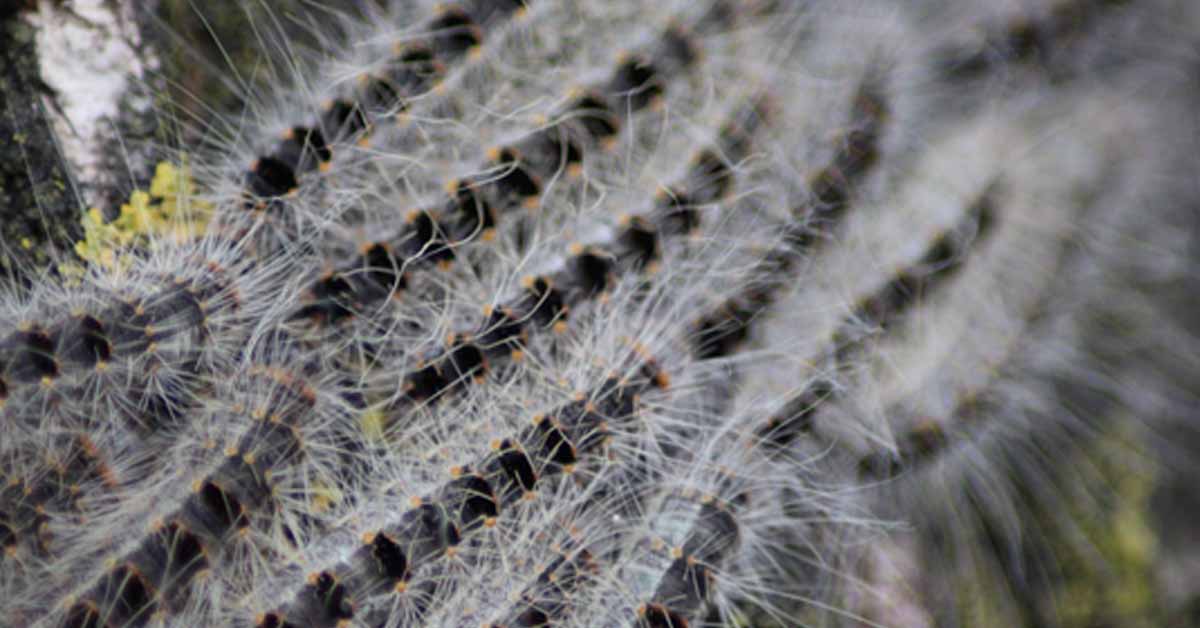The UK isn’t typically known for housing dangerous and harmful animals like more tropical locations. But there are one species that gardeners need to be aware of, not just for the health of their trees but also to protect themselves. The Oak Processionary Moth poses a genuine threat to tree and human health. Here are the details.
Key points:
- The Oak Processionary Moth was first identified in the south of England in 2005
- The caterpillars of these moths can seriously damage oak trees, but they pose an even bigger risk to human health and pets.
- There are things you must and must not do when dealing with Oak Processionary Moth caterpillars.
What is the Oak Processionary Moth?
Oak Processionary Moths originate from southern Europe. However, they were first discovered in London and the surrounding counties in 2005.
The caterpillars of these moths usually look like other species of caterpillars in the beginning, making them difficult to spot for most amateur gardeners and nature observers. But spotting them becomes much easier as they appear larger and distinct.
In the early summer, they grow to around 20mm to 25mm and are dark with lots of white hairs. They move in a distinct nose-to-tail procession, which gives the species its name. You’ll also see their white webbing nests on tree trunks and branches with white silken trails left behind.
The moths are brown with a wingspan between 25mm and 35mm. The moths emerge from pupae in later summer but only live for a few days. They will lay eggs at the top of oak trees during these days.
Where are Oak Processionary Moths found in the UK?
So far, the outbreak of these moths has been contained to where they were initially found in the southeast.
You can see a recent map below and find real-time information by visiting this page.
Source: https://forestry.maps.arcgis.com/apps/webappviewer/index.html?id=c647b00b75d34647aeb5a9d07eca9785
The core zone is where most are found, followed by a buffer zone with some instances, which includes the Kent region. And then there is the zone with no recordings farther out.
Do Oak Processionary Moths damage trees?
The caterpillars of the moth have the potential to defoliate the oak trees where they nest. Although defoliation isn’t a sure sign that these caterpillars are present, it’s one possible problem.
If you notice defoliation in your oak trees or any other trees, it’s best to speak with professional tree surgeons for an accurate diagnosis. NJ Apps is here to help you understand your tree’s health in Kent and nearby areas.
Are Oak Processionary Moths dangerous to humans?
Yes, the caterpillars are dangerous to you and your four-legged friends. The caterpillars can cause painful rashes and respiratory issues in humans and animals. They can even trigger life-threatening asthma attacks.
These issues are caused by the toxic hairs on the body of the caterpillar, which become active when the caterpillars start moving in processions.
What should you do if you see Oak Processionary Moth caterpillars?
Never approach or touch these caterpillars!
If you do manage to find one, it should be immediately reported to Forest Research’s TreeAlert.
If you’re unsure, you can always contact our team, who will help you identify the caterpillar species. And if we think you do have a case, we can help you take the next steps to protect yourself, your loved ones and your family pets.
And of course, our experienced tree surgeons will always advise you on the best solutions to defoliation and other tree problems.
What is being done to stop the Oak Processionary Moth?
The government is concerned with the presence of the Oak processionary Moth in London and neighbouring counties. It has put in place several measures to try and contain the problem, including the creation of zones as referenced in the earlier map image.
One measure has been to impose tougher restrictions on the importation of oak products, which may have been the cause of the moth outbreak on UK soil in the first place.
Concerned about the defoliation of your trees?
There’s a good chance that the defoliation of your trees is due to a different problem. After all, these moths are still somewhat rare in most parts of the UK. For help understanding and improving your tree health, don’t hesitate to contact our Kent tree surgeons today!
